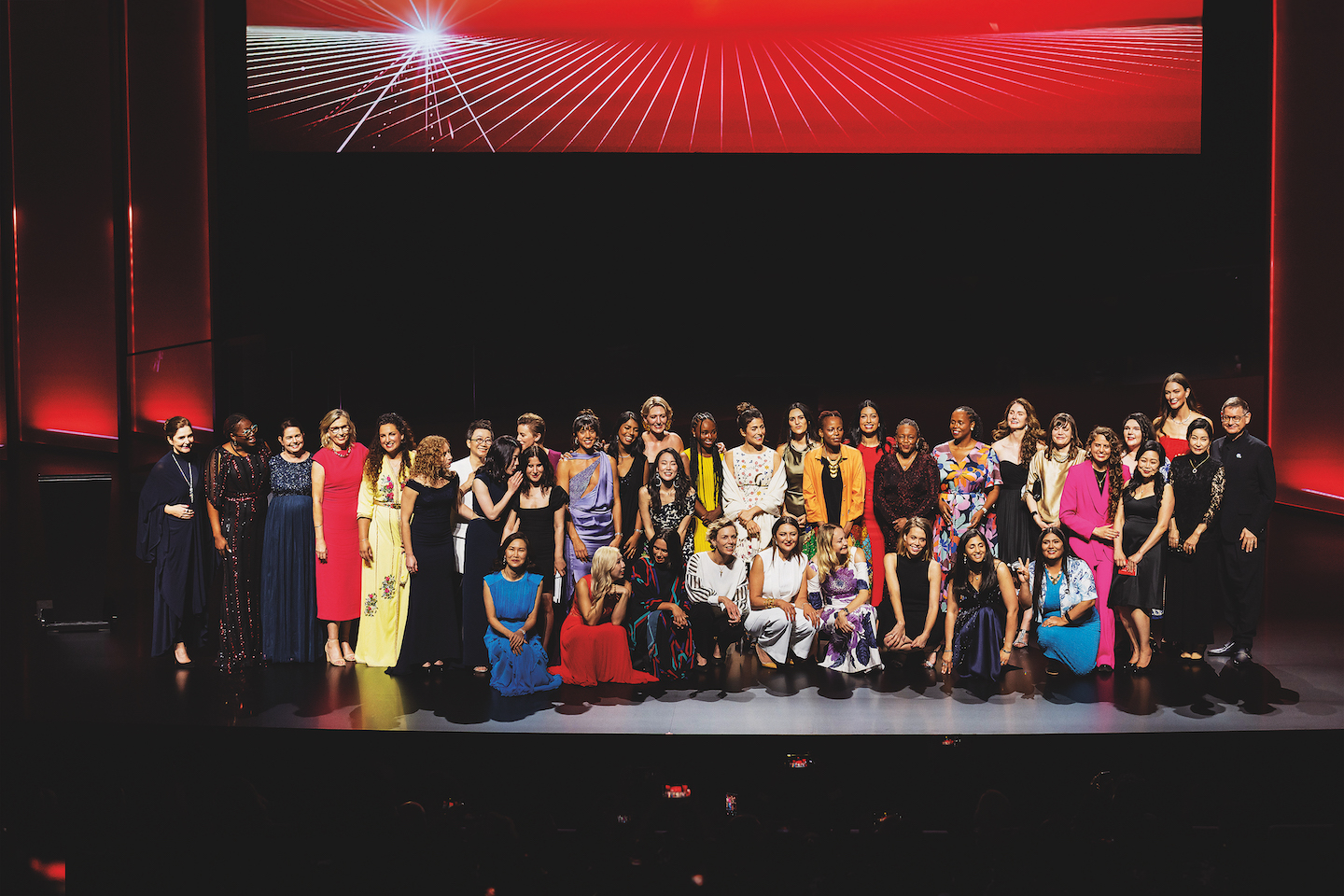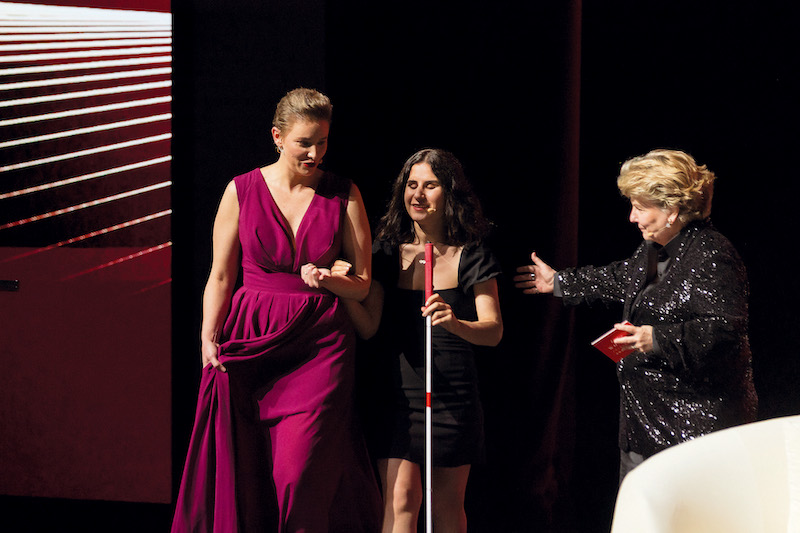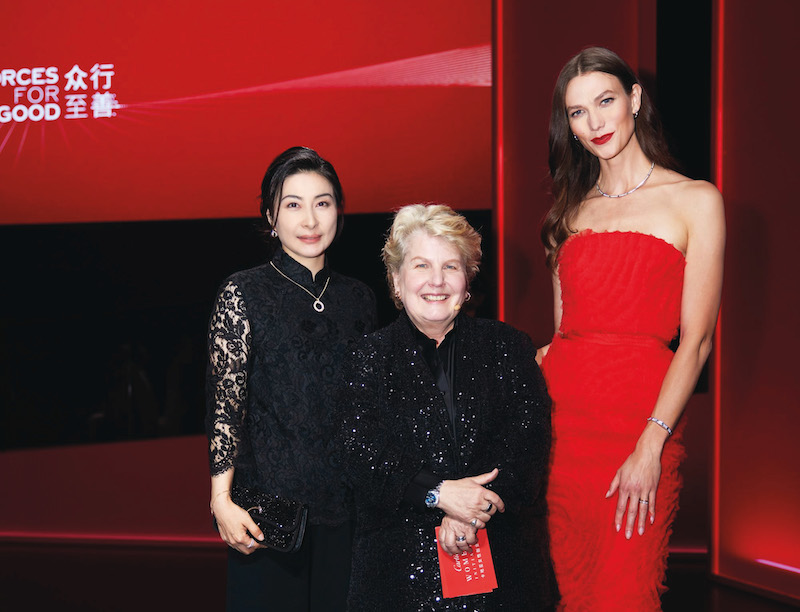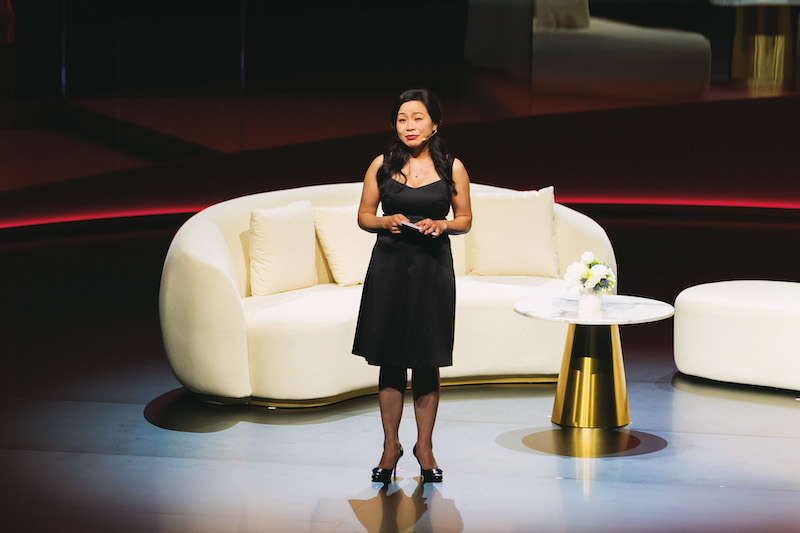
The annual international entrepreneurship programme set up in 2006 provides entrepreneurs from any country or sector with financial and human capital to expand their businesses (All photos: Cartier)
On a bright morning, 15-year-old Sadriye Görece braved the bustle to make her way to school in Arkansas. For most teens, the daily commute is not a particularly exciting part of their routine. But when you are born into a world where spaces are not built to be universal, a simple trek can turn into a testing expedition. Görece, who is congenitally visually impaired, had not known that when she applied for the Kennedy-Lugar Youth Exchange & Study scholarship behind her family’s back in 2009 and left her Türkiye home to study in the US alone.
Navigating life without vision is often a one-sided dialogue, as if you are an outsider listening in on others. But Görece does not lose sight of the sensations around her. She has no idea how someone laughs but she can hear it. She delights in her own imagination, of how the rain smells, the sun feels and her friends look. Through conversations, she discovered those who shared her fate, and such encounters led to creating an early version of what would become her full-time entrepreneurial endeavour in the future, BlindLook. Through a community, she found humanity.
sadriye_gorece_of_blindlook_middle.jpg

And if the inspiring stories shared at the recent Cartier Women’s Initiative (CWI) held in Shenzhen, China — chosen for the city’s thriving innovative spirit — are any indication, we can most certainly use a little more humanity right now.
Now in its 17th edition, the annual international entrepreneurship programme set up in 2006 provides entrepreneurs from any country or sector with financial and human capital to expand their businesses. The first, second and third place winners receive a grant funding of US$100,000 (RM469,450), US$60,000 and US$30,000 respectively. The ventures, which have a strong sustainable, social or environmental impact, address the United Nations Sustainable Development Goals to improve lives and preserve the planet.
To create more opportunities worldwide, CWI in 2022 introduced the Loan Fund managed by Beneficial Returns, which provides assistance of up to US$200,000 to recipients, or fellows, as Cartier calls them, in select geographies at preferential interest rates to enhance their financial resilience post-Covid and prepare them for conventional investors. A year later, the maison invited men into the fold by launching the Diversity, Equity and Inclusion Award (DEI) to reward entrepreneurs — regardless of gender — whose businesses lift the underrepresented or underserved. Görece beat 82 applicants, 20% of them men, to place first in this category in 2024.
van_enk_claimed_second_place_at_the_cw_2024i_under_the_anglophone_and_lusophone_africa_category_2.jpg

“Life is not equal for me as a blind person. Brands don’t see me as a consumer. They see me as a social responsibility. But I’m paying the same amount as you are. Creating that level of equality drives us,” says Görece, the co-founder and chief operating officer of BlindLook, a tech-based company from the Bay Area, San Francisco. It has devised an app that uses artificial intelligence (AI) to bridge visually impaired consumers and brand experiences, whether it is an audio simulation that deciphers visual cues (like making sense of a cooking recipe that requires “potatoes to be fried until golden brown”) or a voice function that reads a restaurant menu aloud when one is dining out.
Previously a business plan competition that was part of the Women’s Forum for the Economy and Society, CWI, at the urging of Cartier president and CEO Cyrille Vigneron, became a free-standing programme in 2017. It has since given out more than US$9.5 million in grants to about 300 entrepreneurs from 60 countries.
“I am a feminist,” expresses Vigneron at the award presentation before a glittering audience that included former Olympic diving legend Guo Jingjing and supermodel turned coding school founder Karlie Kloss.
guojingjing.jpg

“Women continue to face difficulties and doubts. They are often told ‘no, not now, not you, you won’t get financed, you should do something better …’ But they are resilient [in finding] solutions in the name of change despite these rejections. This is like a mini UN for women who are all united here for good,” he adds.
Vigneron’s speech drives home the point of how investors use disproportionate standards to evaluate female entrepreneurs and those from minority backgrounds, compared with that for their white male counterparts whose companies may seem “less risky”. Stubborn narratives about women and poor wealth management are still hard to dislodge, spurring CWI even more to prove that the success of these trailblazers and their growing participation in the economic world are not only anecdotal.
Within the Cartier family, that message is also ardently spread by CWI global programme director Wingee Sin, who had worked in the capital markets for 15 years at State Street Global Advisors, Barclays Global Investors and Goldman Sachs.
“Although CWI is focused on the incremental impact of entrepreneurs, investors also need to relook their expectations to cultivate an inclusive ecosystem,” says Sin, who calls for companies to employ a gender-lens strategy — an approach that takes gender-based factors into consideration to advance equality for all — which can better inform financial decisions.
To keep score of the programme’s evolution and improve on it, the maison launched an Impact Report in conjunction with CWI’s 15th anniversary. The findings track how Cartier’s partnership with INSEAD business school and resources such as offering fundraising know-how, honing soft-sell skills as well as building a persuasive investor pitch have supported its fellows in their journey. They also determine if these enterprises are really contributing to the social environment. CWI put forth 40 questions in an online survey to its 228 alumni, and that data became the baseline to measure the efficacy and footprint of the initiative.
cwi_global_programme_director_wingee_sin.jpg

The entrepreneurs train on a larger platform so they can flourish somewhere smaller, like their local communities back home where they may have to deal with food crises, poverty and discrimination. And nine of CWI’s former fellows — who have staked a claim with their pioneering work, showcased significant and measurable impacts within their fields and paved the way for generations after them — will be honoured at the next edition, alongside the Women’s Pavilion at the World Expo in Osaka, Japan. Cartier ensures past awardees stay actively engaged so that they can impart their knowledge and wisdom to the current cohort.
What would a world where every woman could achieve her full potential look like? “A boosted global GDP by over 25%, and corporate innovation would be six times higher. There would be less hunger, fewer child deaths, less disease and more lasting peace,” Sin once said. Those goals still remain, but hopefully, they will not be seen as a gauge but a given. “I’d like to think that maybe in the future, we won’t need a programme like ours anymore because everybody’s business will be a very inclusive entrepreneurship ecosystem.”
For now, CWI’s mission is far from being complete. Even though empowerment is celebrated, only when female role models wield power in sufficient numbers can we create a society that genuinely caters for all women and girls.
Erica Cole and Claire van Enk, two hungry dreamers out of the 33 fellows this year, show us how that equitable environment will benefit everyone.
Threading possibilities
To be a person with disability is, sometimes, to be simultaneously ogled at and overlooked. Six years ago when she was 22, Erica Cole lost her leg in a car accident when she was living in Colorado, the US. A chore as simple as getting dressed became a laborious battle.
“Nothing would fit over my prosthetic. I had to wear sweatpants that were three sizes too big, or cut-off trousers. That was difficult for someone whose peers wore stylish clothes,” says the founder of No Limbits, an adaptive clothing brand that offers ready-to-wear garments tailored for amputees and those with limited dexterity, lymphedema or sensory processing disorders. Jeans come with hidden zippers and magnetic closures for easy prosthetic access; pockets on pants are sewn thigh-high so wheelchair users can reach them effortlessly.
cole_hopes_to_increase_the_independence_of_people_with_disabilities.jpg

Cole’s venture, which gained visibility and a US$100,000 investment through Shark Tank (a reality TV show where the ambitious present their breakthrough business concepts), reveals just how facile the world’s perception of physical vulnerabilities is — no two people with the same bodily impairments are actually alike. Therefore, hiring a team with dynamic disabilities provides a wider lens through which Cole can serve end users better because “imagine how terrible it would be for a person with movement issues to struggle with a packaging that is supposed to aid your mobility”. The next step is to collaborate with commercial brands, beyond her existing partners such as retail corporation Walmart, shopping channel QVS and independent clinics, to offer apparel that is as ubiquitous as other categories such as “petite” or “maternity”.
“If you don’t share the same space as disabled people, you may underestimate the obstacles they face. I can’t speak for everyone but in North America, they lose their welfare benefits once they get married because the spouse is expected to take care of them. You are only allowed a certain amount of money in your bank account and if you go even a penny over that, you lose your disability income. However, despite the lack of a business background or education, the disabled are great problem solvers because they don’t see themselves as misfits — they can design the solution because they are attuned to their problems,” asserts Cole, who graduated with a chemistry degree but decided to trust her instincts to expand her alterations business on the side.
adaptive_fashion_design_has_until_now_come_from_a_medical_perspective_that_focuses_on_the_caretaker_rather_than_the_user.jpg

No longer are the physically challenged an afterthought at No Limbits, which has helped more than 3,000 customers live with dignity and agency. Not only do they feel confident and belong — after 10 or 20 years of tackling fiddly buttons or fabric that chafes in a wheelchair — they can feel their well-being improve just by being able to use the restroom on their own. As Cole emphasises, “accessible apparel gives an opportunity for self-expression that hasn’t been afforded to disabled people before”.
The Cartier fellow, who clinched third place in the DEI segment, will be using the knowledge she gleaned from experts to scale her business internationally. Fashion, more than just a stylistic choice, should not leave anyone detached from an everyday experience in a fundamental way.
Feeding the future
Frugality comes naturally to the people of Kenya as they have been fortified by time spent on the farm. So, imagine the terrible effect Covid-19 exerted on the country where 75% of the population, which depends on agriculture, lost access to income and the link to marketplaces. Of Dutch descent and raised in Kenya, Claire van Enk started Farm to Feed through GoFundMe initially as a food relief effort by donating unsold or imperfect produce — lopsided potatoes, scratched eggplants — to communities crippled by the pandemic. But she soon found a long-term fix for the misshapen.
van_enk_wants_to_create_a_circular_food_system_where_nothing_goes_to_waste_.jpg

Waste is often a hot topic when food insecurity is mentioned yet one rarely finds food loss, usually due to failure to meet the cosmetic specifications demanded by the market, amid discussions of global hunger. The latter is a grave problem for Kenya, which loses more than US$1.5 billion annually to post-harvest damage caused by drought, disease or inadequate storage.
“We don’t sell a tomato to a customer, we sell transformation. If you find a bigger market for the low-income households, which can spend up to three-quarters of their money on food, Kenya as a whole is uplifted. We want to expand to the regions around it too,” explains Van Enk, the founder of Africa’s first online platform that aggregates surplus or blemished crops — those considered too small, too big or “ugly” — and sells them to hotels, restaurants, caterers, schools and B2Bs. Since 2021, Farm to Feed has worked with 6,000 farmers, rescued 920,000kg of produce and avoided 1,000 tonnes of CO2-equivalent emissions.
All these efforts point to a disconnect in the modern global food system: A lot of produce is not consumed even as people end up starving. But a wonky-looking carrot that grew twisted underground, given a second take, can add nutritional value to a child’s meal in a poor nation, which usually consists of just rice and beans.
farm_to_feed_is_africas_first_digital_marketplace_for_imperfect_and_surplus_produce.jpg

Farm to Feed is already building a streamlined platform by collecting granular data for better farming outcomes to create a more circular production network. But funding as well as digital literacy still play a big role in helping the start-up cover not just Kenya but also sub-Saharan Africa. Securing investors who genuinely care and linking up with partners who think unconventionally — since Van Enk, in her words, is “the odd-looking solution to food loss” — will assist in enacting food rescue measures.
Often, revolution is not presented on a tidy road map. But Van Enk, who is ready to transition from entrepreneur to manager, believes a mindset switch can start by highlighting how much of earth’s edible bounty is being squandered.
“Farmers, especially in this part of the world who cannot afford to buy quality seeds and fertilisers, are the most susceptible to climate change. An enormous flood can wash away all their efforts. So to upend the entire food landscape and ecosystem takes time, and you have to find the right people to do the job. The biggest compliment I’ve received from my investors is that I’ve been able to attract a talented, diverse team that gives me a worldly perspective. That, to me, is the greatest validation.”
This article first appeared on June 10, 2024 in The Edge Malaysia.


